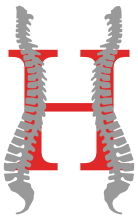Sciatica is a condition causing pain and discomfort along the length of the sciatic nerve, the longest nerve in the body. The sciatic nerve runs from the lower back through the buttocks and leg to the foot. Sciatica is characterized by sensations that can include a burning feeling, pins and needles, numbness, and weakness in the lower back, buttocks, and leg regions.
What Causes Sciatica?
There are multiple causes of sciatica, each of which causes abnormal pressure or “pinching” of the sciatic nerve. Some of the causes of sciatica are:
- A herniated or bulging disc that puts pressure on a nerve root. This is the most common cause of sciatica.
- Spinal bone spurs that put pressure on surrounding nerves
- Spondylolisthesis, where slippage of a vertebra narrows the nerve opening
- Piriformis syndrome, which occurs when the piriformis muscle, located deep within the buttocks, tightens or spasms and irritates the sciatic nerve
- Spinal stenosis is a narrowing of the spinal canal
- Irritation of and additional pressure on the sciatic nerve during pregnancy






